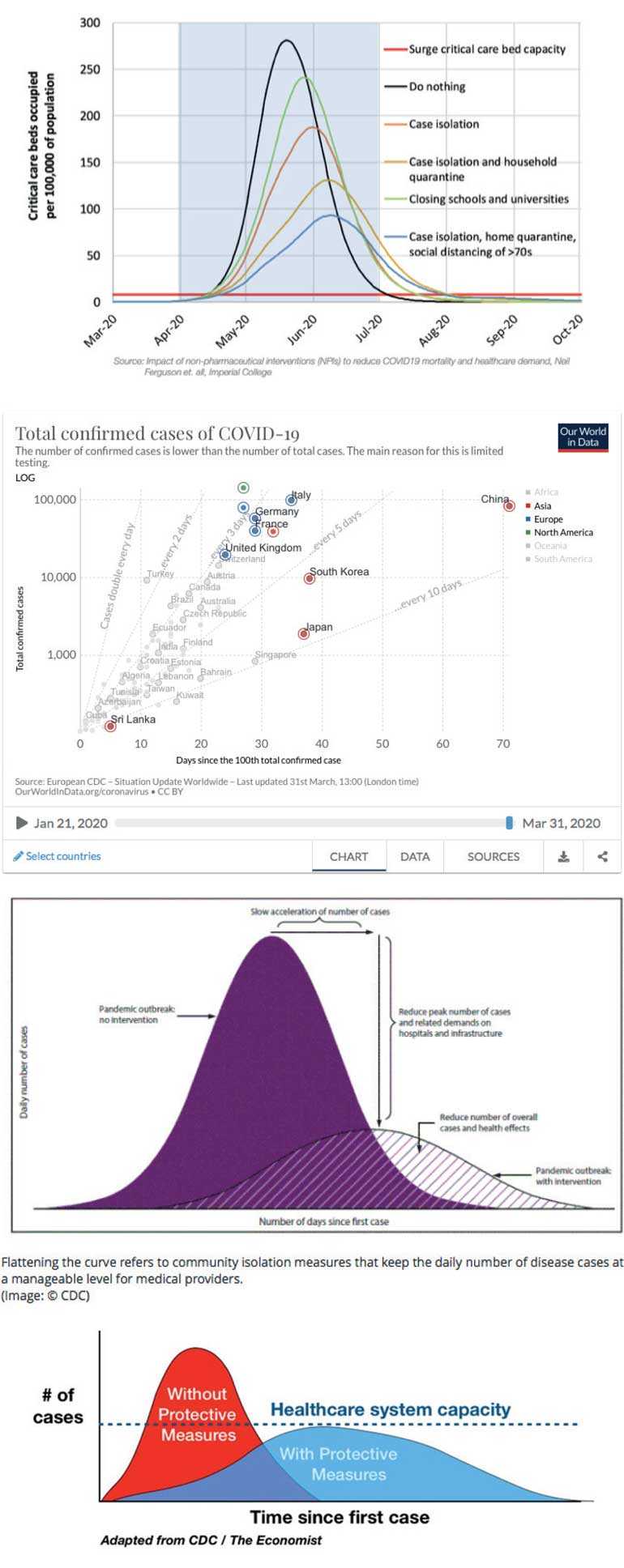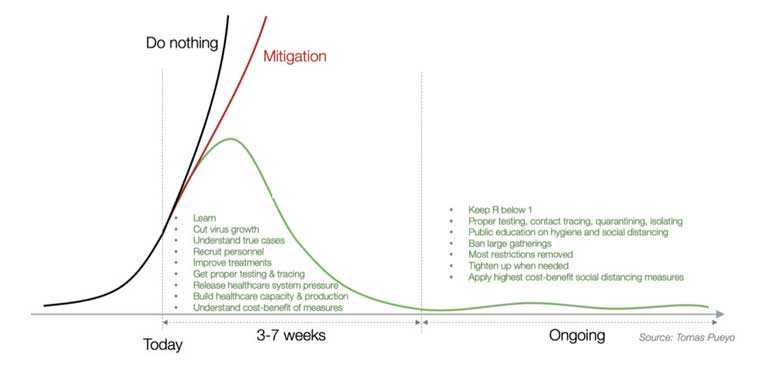Friday Apr 04, 2025
Friday Apr 04, 2025
Thursday, 2 April 2020 00:00 - - {{hitsCtrl.values.hits}}


I am sure not a single astrologer – and there are many – predicted the situation we would face in 2020. Historians have identified that a pandemic has happened once every 100 years, and 2020 too has delivered – Spanish Flu was in 1919, Cholera Pandemic in 1820 and The Plague in 1720! On 31  December 2019 China alerted WHO of the disease cluster in Wuhan and couple of months from that day we have the WHO declaring a pandemic.
December 2019 China alerted WHO of the disease cluster in Wuhan and couple of months from that day we have the WHO declaring a pandemic.
Coming back to astrology I hear too many of them talking about making best use of the enforced holiday period that most of us are having today and giving what is in store for different signs. I would have been much happier and definitely better prepared if they told all of us the enforced holiday time that was to come in advance. Unfortunately they did not see the historical prediction nor foresaw anything from the planetary movements.
Year 2020 should have been the perfect year for the perfect vision but we are today haunted by something not quite visible. While going viral was embraced by the digital community and the millennials as that shows the power and the influence – we all want our posts to go viral – little did we know in 2020 that we will see a real virus going viral and the last thing we today have is awe with the result!
Looking at a curve for guidance and action
It is a sign of the times that everyone from global leaders to frontline healthcare workers are anxiously looking at a curve today for guidance and action. The world may have some fixation on curves but this fixation is on a curve that is mathematical and data driven, perhaps not seen or heard of before.
As we are living through a pandemic with no end in sight, all are looking at their national curve of infections against time. The case number, which means the confirmed infected cases plotted against time, indicates what is to come, which is of course mostly the prerogative of the virus but tamed or killed by our actions.
With the use of the intervention ‘killing,’ some may argue over whether a virus is a live material or not. If we go by a strict definition virus as it needs a host to reproduce and grow, then a virus cannot be considered as an example of a living matter. Yet when latched on to a cell and then with the ability to coax the host to produce in millions, you begin to experience what is meant by viral!
For the moment SARS-Cov-2, the novel virus’s official name, has neither a vaccine to immunise nor medicine for subsequent complications. As usually with viruses it spares some hosts of complications but only take them as a companion to hitch a ride. Many will not show any symptoms at all and they would fend off the virus fighting on their own. Their collection of antibodies of course is of importance as research goes on to test and declare the spread of the virus. At the moment in Sri Lanka we are not seeing this part of the story. Positive news is lots of ideas are allowed to incubate and moved forward.
These carriers have the potential to infect others, as virus shedding by them is certainly possible. So we may have a situation where the young act as carriers and infect the elderly due to their affection. One reason given for Italy for their significant number of deaths in the senior category – it’s a society with much more young and elderly interactions compared to some other EU countries.
Flattening the curve
The importance of the curve is that it clearly has inbuilt features to shed light on issues to emerge. If no significant action is taken the viral behaviour reigns supreme and significant damage through deaths and diseases is possible. Actions steps are through mitigation or suppression and in each case the intensity can vary giving rise to different curves.
The term we hear these days, ‘flattening the curve,’ has become of utmost importance in fighting COVID-19. Of course the epidemiologists very well know these concepts but lots of lay people are learning the term and associated actions, which are not quite pleasant (social distancing, lockdown, curfew, no assemblies, etc.). I think epidemiologists have a seriously difficult task when democracies are run with lot more populist concepts than with scientific underpinning.
The USA is a case study in the making. China had many missteps in the beginning but with the Central Government walking in, went on to enact procedures that the outside world considered as draconian and even voiced as human right abuses. However I am sure many epidemiologists from any country would have known better and surely would have agreed among each other on the steps taken at that stage.
Epidemiologists may have their own differences based on modelling which are mathematically mostly identical but with societal data factored in may lead to different outputs and interpretations. Moving across from USA to UK to Holland such differences in approach stemming from science are seen. Yet the basics apply with the interpretation of the curve and the shape what one desire. The decision makers are different and they grasp different theories at times preferring interpretations that they like to hear or are more comfortable with. Thereafter actions get tweaked to suit the establishment.
China managed to flatten the curve demonstrating the effectiveness of such action. They and the rest of the world too would have paid for the early omissions. When the tragedy was unfolding in Wuhan the rest of the world had time to watch and take lessons and plan for the emerging scenario.
Of course we all are eternal optimists in this type of situation. Some virus from thousands of miles away is not going to affect us is a frequent thought – so no lessons and no preparation. Instead of learning from the ground zero management and the associated science, many countries lost precious time.
Taiwan and Singapore positioned quite close to China did differently and they have curves of difference. South Korea and USA identified their first infection on the same day and the story subsequently as it unfolded tell a completely different story and curves! Two different curves emerged from these two nation states simply due to their handling of the situation.
South Korea succeeded in flattening the curve while USA is getting hit as their responses has had no effect on changing the gradient of the curve. As we speak USA leads the world in infections and that too with testing still below par and deaths are climbing while South Korea today is more worried about the cases coming from outside causing a second wave in the country.
President Trump has finally backed down on ‘let’s get ready to start the economy in two weeks’ call to say that ‘the deaths are going to peak in two weeks’ and the social distancing and stay at home must continue till 30 April. The difference has come from knowing the future as the curve unfolds.
The case in USA is a clear example of ignoring or sidelining relevant science. In the national debriefings however both the politician and the scientist appear together, but are not speaking with the same understanding. To the politician there is a choice they want to serve more – people or the economy. Politicians think of cure being much more severe than the disease! Again USA and Brazil are showing this behaviour.
For the scientist, it is always the issue at hand and lives that matter and when things get really bad developments similar to military triage emerges too but that is never on the wish list. The latter scenario is a reality when the medical system is overwhelmed and there are not enough resources to be used but this happens when the nation is on the wrong curve.
The British Prime Minister of course changed the response albeit late after a new model emerged from the Imperial College with numbers sufficiently scaring No. 10 to a different course of action. The Dutch Prime Minister follows a slightly hands-off policy but adhering to the results coming from the modelling at the National Institute for Public health and the Environment. So multiple models generating different scenarios are guiding in some countries but overall the State makes the final decision. However, it is important to understand the power of these two curves in infection control and management.
Why is the flattened curve important?
Why is trying to have the flattened curve important? The enormity of impact is really worrying if one goes on the wrong curve. To the rest of the world both scenarios have unfolded – China demonstrated the curve of dangerous growth and with strong action how the trend was reversed. South Korea and Singapore knowing the emerging situation took action very early on to ensure that the country never enters the killer curve with lot less aggression but with testing, tracing, isolation and treatment. Their strategy was effectively preventing the virus hitching multiple rides.
China lost some valuable time in the beginning, which of course can be considered as they did not know what was happening initially and did not have the luxury of learning other than from history of such scenarios. Taiwan and Singapore actually utilised the learning from the SARS episode and systems were ready to respond. It is to be indicated that WHO issued notice and guideline for national response for COVID-19 on 3 February, which included a system to identify an inventory to plan for the response. Thus it boils down to the importance the political system gives to such scientific communications.
Sadly when it comes to these two curves and their impact, missing the all-important ‘act with speed’ can be telling. While Italy and Spain were reeling from the virus, the UK was considering the herd immunity approach and it was quite late when the Government decided to give an ear to the model that came from Imperial College and took some strong action but still with less conviction.
One may identify community spread events associated with the pandemic exacerbated due to wrong decision making: The migrants returning to Italy from Wuhan without check, the migration to south from north when the lockdown was announced but was late in enacting, the mass gathering at a church in South Korea, the religious gathering in Malaysia, the Challenge Cup match in an Estonian Island (Saaremaa island), the meeting of sports association in Singapore, etc. I am sure we can also identify few such events in Sri Lanka though may not with the same magnitude and in one situation we appear to have escaped with much less casualties though we are not yet clear of the impact from carriers who have shown no symptoms.
Understanding the significance of having such events ignoring the necessity in times like this is also not without famous past examples – When the Spanish Flu was on 100 years ago, US soldiers brought the virus from Spain but they travelled on ships so it was slow to spread. However, a city in USA Philadelphia decided to hold a victory parade ignoring the presence of the virus and the result was devastating. Cities that cancelled such parades did not suffer much! Built on such examples scientific advice should be given their due place.
Another benefit of flattening the curve is the country’s health system would not be overwhelmed under such conditions. Actually the strategies are carried out with the understanding of the resources available. You can always understand the resources that one has, say from ICU beds to ventilators.
Sri Lanka has 3.27 ICU beds per 100,000 population in the Western Province but 1.3 per one 100,000 in the Sabaragamuwa Province. So nationally one needs to consider the difference in resource availability as per the geographical distribution as well. As I write UK is about to open the 4,000-bed Nightingale Hospital, supposed to be the world’s largest hospital solely catering to the expected COVID-19 patients. World record for what – penalty for the failure in not taking the right decision on time?!
Science of epidemiology
Science of epidemiology is what would have to guide this situation and it is they who understand the tale of these two curves. We have seen one State Finance Minister from Germany even committing suicide unable perhaps to handle the economic pressure stemming from COVID-19 even with Germany managing the disease quite well.
It is important to understand when one sees the curves, early recommendations initially may tend to be quite tough and the decision maker may take a lesser pathway thinking about the palatability of such action by society when the visual nature of the problem is not that bad at all. Then when the exponential behaviour becomes evident, there will be the accusations of not having acted promptly, then it would be way too late. What we are experiencing is result of action taken a few weeks back and that is true for Sri Lanka as well.
The continuous dry cough from the virus settling down well within our cells is no joke both to the individual and the economy. It must be reiterated – the flattened curve is everything to work for! We started with astrology but the world has a new reality – the world today has only a single choice and that is to depend on science!